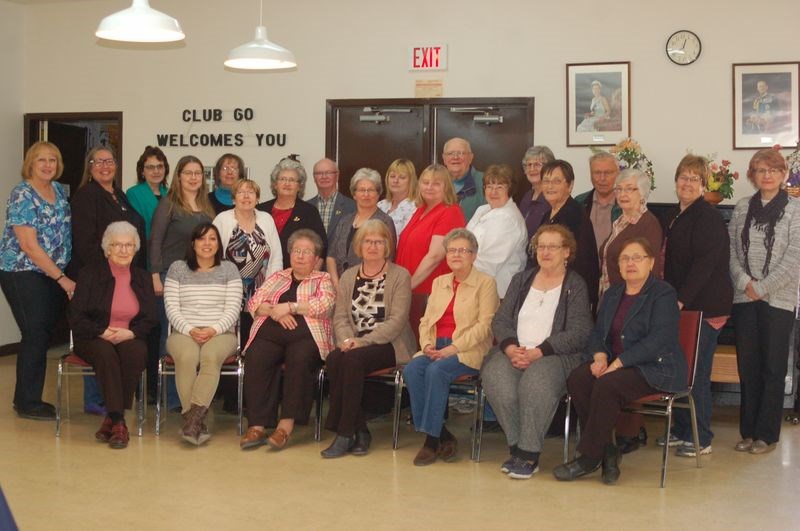Nearly 30 representatives of the museums within the Seneca Root Museums Association were in Preeceville April 27 for their spring meeting.
Hosted by the Preeceville and District Heritage Museum, the meeting, held at Preeceville’s Club 60, was chaired by Darlene Brown of Kamsack, the association’s networker.
Attending were representatives of Kamsack’s Power House Museum, the National Doukhobor Heritage Village in Veregin, the Fort Pelly-Livingstone Museum at Pelly, the Sturgis Station House Museum, the Canora Station House Museum, the Ukrainian Heritage Museum in Canora, the Preeceville and District Heritage Museum and the Melville Heritage Museum. The Saltcoats museum was the only member of the association that was not represented.
May-Lin Polk, a representative of the Museums Association of Saskatchewan (MAS), of which all the Seneca Root museums are members, was the special guest speaker.
Polk discussed a pilot project that made use of a new Internet database and said that because the trials of the database had been successful, each of the museums in the association will be provided with it.
This new database is a big thing and it will allow for the standardization of the recording of artifacts in all the museums, Brown explained.
Polk also talked about how to label historic artifacts and new methods of labelling, Brown said, adding that Polk is very knowledgeable and always “comes up with something new and interesting.”
Representatives discussed a new brochure that has been printed for the association and each was given copies of the new Seneca Root calendar which is a poster containing all of the events scheduled by the member museums during the year. Copies of the poster are to be distributed in each of the communities.
Included in the discussion was the MAS annual convention being held in Prince Albert May 26 to 28. Brown and Lydia Cherkas, president of the Power House Museum, are expected to attend the convention.
A part of the meeting included reports from representatives of each of the museums.
Speaking on behalf of the Power House Museum, Cherkas outlined highlights of the past year and explained that in the autumn the board had formed two committees: a long-term planning committee authorized to assess, identify needs and find contractors, and a policy, procedures and standards committee that would assure policies are developed to meet MAS standards.
Changes in the board make-up were endorsed during the board’s annual meeting in March, Cherkas said, adding that an events committee was formed to plan the 2016 season that will include an opening on May 22 featuring the Northwest Regional Métis Dancers and the Polka Pals band.
Cherkas said that a video and oral history of seniors in the area, which had been made by the late Nick Trofimenkoff, was recently discovered and is to be used at the museum.
Speaking on behalf of the Fort Pelly-Livingstone Museum in Pelly, Yvonne Hotzak said that the board has had regular monthly meetings despite the fact that the museum building had been destroyed by fire last year.
“The board is not accepting artifacts at this time as we will have no place for storage until we have a building,” Hotzak said, adding that the board continues to fundraise through suppers and barbecues in order to acquire a new building.
The National Doukhobor Heritage Village has three main events planned for 2016, said Tannis Negrave. The Museum Appreciation Day will be held on June 6; Peter’s Day is on June 29, and Heritage Day will be celebrated on July 17.
The centennial of the village’s historic prayer home will be celebrated July 16, 2017 while the country celebrates its 150th anniversary, Negrave said, adding that invitations have already been sent to Doukhobor groups in Canada to help celebrate the prayer home’s 100th anniversary.
The association’s autumn meeting will be held in Veregin on October 26, and Kamsack will host the event next April.




